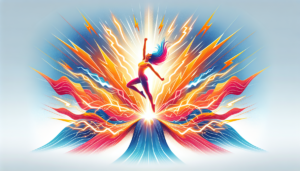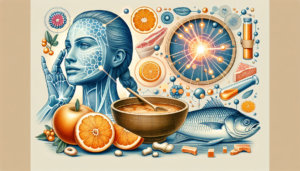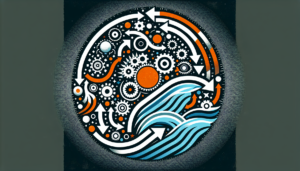Color Psychology: How Aesthetics Influence Our Mood
Color Psychology: How Aesthetics Influence Our Mood
Understanding Color Psychology
Color psychology is the study of how colors influence human behavior, perception, and emotions. This fascinating field explores the connection between hues and psychological responses, highlighting how colors can evoke feelings and impact mood. By understanding these nuances, brands and individuals can strategically use color to enhance experiences, whether in marketing, interior design, or fashion.
The Basics of Color Psychology
Primary Colors
- Red: Often associated with passion, energy, and excitement. Red can raise blood pressure and stimulate appetite, making it effective in restaurants.
- Blue: Represents calmness and serenity. Blue can reduce stress and create a sense of peace, which is why it’s popular in corporate environments.
- Yellow: Linked to happiness and optimism. Yellow can energize spaces but should be used sparingly to avoid overstimulation.
- Green: Symbolizes nature, balance, and healing. Green is soothing and promotes a sense of tranquility, which is why it’s often used in health-related contexts.
- Black: Associated with elegance and sophistication but can also evoke feelings of sadness and darkness when overused.
- White: Represents purity and simplicity. White creates a sense of space and cleanliness but can feel stark if not balanced with other colors.
Secondary Colors
Combining primary colors creates secondary hues, which also carry psychological weight.
- Purple: Often linked to luxury, creativity, and spirituality. It’s commonly used in branding to convey richness.
- Orange: A blend of red and yellow, orange symbolizes enthusiasm and vitality. It’s effective for attracting attention and stimulating social interactions.
- Brown: Associated with stability and reliability. It evokes a sense of warmth and comfort, often used in earthy designs.
The Emotional Impact of Colors
Colors evoke emotional responses based on personal experiences, cultural interpretations, and psychological associations. Understanding these responses allows individuals and brands to harness colors effectively.
Warm Colors
Warm colors like red, orange, and yellow stimulate energy and excitement. However, while they can create enthusiasm, they may also lead to feelings of aggression or irritability if overemphasized.
- Red: Energetic but can incite hunger. Perfect for kitchens.
- Orange: Inviting and sociable, making it ideal for spaces meant for gathering, like living rooms.
- Yellow: Bright and cheerful but can become overwhelming. Best used as accents.
Cool Colors
Cool colors such as blue, green, and purple have calming effects and encourage relaxation and introspection.
- Blue: Reduces stress and increases productivity, often found in offices and educational settings.
- Green: Refreshes and revitalizes, effective in healthcare environments for their soothing qualities.
- Purple: Stimulates creativity, making it a great choice for artistic spaces.
Neutrals and Their Effect
Neutral colors like gray, beige, and white provide balance and can serve as a backdrop that enhances other colors. These shades can evoke feelings of calmness and professionalism.
- Gray: Calm and neutral, often used in modern designs; however, it can also feel dreary if not complemented appropriately.
- Beige: Warm and inviting, often used in homes to create comfort.
- White: Offers clarity and cleanliness but can feel sterile without the company of other colors.
Cultural Influences on Color Perception
The perception of colors is not universal; cultural influences significantly affect how we interpret colors. For instance, while white signifies purity and peace in many Western cultures, it symbolizes mourning in some Asian cultures.
Western vs. Eastern Perspectives
- Western Cultures: Generally link red with love and passion, blue with trust and calmness, and yellow with happiness.
- Eastern Cultures: Often view red as a symbol of luck and prosperity, while white may evoke feelings of mourning and loss.
Global Marketing Implications
Understanding cultural interpretations of colors is essential for global marketing. For instance, a company seeking to launch a product in various countries must adapt its branding colors to fit local connotations.
The Role of Color in Branding
Creating Brand Identity
Colors play a critical role in establishing brand identity. Companies select specific hues to communicate their core values and resonate with target audiences. For example:
- Coca-Cola uses red to evoke excitement and energy.
- Facebook employs blue to convey trustworthiness and reliability.
Enhancing Brand Recognition
Brand colors enhance recognition and are often the first aspect consumers notice. Research indicates that consistent use of color can increase brand recognition by up to 80%. Additionally, colors create emotional connections, influencing consumer behavior and purchase decisions.
Color in Interior Design
Creating Atmosphere
Interior designers use color psychology to create desired atmospheres in different spaces.
- Living Rooms: Warm colors like orange and yellow promote social interaction.
- Bedrooms: Cool colors such as blue and green foster tranquility and restfulness.
- Offices: Blue and green improve focus and productivity, essential for work environments.
Balancing Color Schemes
Balancing color schemes is crucial for achieving a harmonious ambiance. While bold, warm colors can stimulate energy, they should be balanced with neutral or cool tones to prevent overstimulation.
Seasonal Influences on Color Preferences
Color preferences can change with the seasons, adapting to natural environments and cultural festivities.
Spring/Summer Colors
During spring and summer, people naturally gravitate towards bright and lively shades such as pastels and vibrant greens. These colors reflect the growth and rejuvenation associated with these seasons.
Fall/Winter Colors
In fall and winter, deeper hues like burgundy, gold, and navy become more popular. These colors evoke warmth and comfort, aligning with cozy indoor activities as temperatures drop.
Color in Fashion
Psychological Impact on Style Choices
Fashion is a direct expression of color psychology, influencing how individuals feel and present themselves.
- Bright Colors: Associated with confidence and exuberance, often worn to make bold statements.
- Dark Colors: Provide a sense of security and elegance, commonly chosen for formal settings.
Seasonal Trends in Fashion
Similar to interior design, fashion trends continually shift in response to seasonal color predictions, with designers often pulling their palettes from nature or cultural events.
Tools for Color Selection
Color Wheel
The color wheel is an essential tool for understanding color relationships. It facilitates the practice of complementary and analogous colors, helping in choosing harmonious palettes.
Digital Tools
Modern designers benefit from digital tools like Adobe Color, which helps to experiment with shades and tones. Choosing colors in design software assists in predicting how various hues interact with one another.
Physical Tools
Swatch books, paint samples, and other physical tools allow designers and decorators to visualize colors in real-life settings, ensuring selections align with intended aesthetics and emotional responses.
The Future of Color Psychology
As industries continue to evolve, the significance of color psychology in various domains is poised to grow. From art installations to virtual environments, understanding how color affects human emotions will remain crucial.
Technological Innovations
Incorporating technology in color psychology, such as AI-powered design tools and apps, allows for a more personalized understanding of color preferences, effectively meeting individual tastes and emotional needs.
Sustainability and Color Choices
Sustainability is increasingly influencing color choices in fashion and design. Consumers are more aware of the environmental impact of colors used in products, prompting brands to adopt earthy tones and eco-friendly dyes.
Summary of Key Insights
Color psychology reveals profound insights into human emotions and behavior. Understanding the psychological effects of colors can enhance marketing strategies, influence personal choices, and improve design elements in various contexts. Whether in branding, interior design, or fashion, a strategic approach to color utilization can lead to more profound and positive emotional connections. Exploring the evolving landscape of this field ensures individuals and brands can harness the full power of color psychology to create meaningful experiences.








